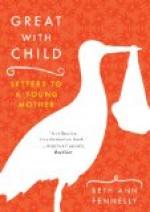Dr. Dewees recommends a small backgammon table, with men, but without dice. He says, also, that “children, as soon as they are capable of comprehending the subject, should be taught draughts or checkers. This game is not only highly amusing, but also very instructive.” In another place he heaps additional encomiums upon the game of checkers. “It becomes a source of endless amusement,” he says, “as it never tires, but always instructs.” Of exercises which instruct, however, as well as amuse, I shall speak presently.
The amusements called “morrice,” “fox and geese,” &c., with which some of the children of almost every neighborhood are more or less acquainted, are of the same general character and tendency as checkers. So is a play, sometimes, but very improperly, called dice, in which two parties play with a small bundle of wooden pins, not unlike knitting pins in shape, but shorter.
The writer to whom I have referred above recommends nine-pins and balls of proper size, as highly useful both for diversion and exercise. If they can be used without leading to bad habits and bad associations, I think they may be useful.
For girls, who demand a great deal more of exercise, both within doors and without, skipping the rope is an excellent amusement. So also is swinging. Both of these exercises may be used either out of doors, or in the nursery.
Trundling a hoop I have always regarded as an amusing out-of-door exercise; and I am not sorry when I sometimes see girls, as well as boys, engaged in it, under the eye of their mothers and teachers.
Playing ball, of which there are many different games, and flying kites, employ a large proportion if not all of the muscles of the body, in such a manner as is likely to confirm the strength, and greatly improve the health. The same may be said of skating in the winter, and swimming in the summer. But these last are exercises over which the mother cannot, ordinarily, have very much control.
Under the head of amusements, it only remains for me to speak of a few juvenile employments of a mixed nature. Of these I shall treat very briefly, as they are a branch of the subject which does not necessarily come within the compass of my present plan. They are exercises, too, which should more properly come under the head of Infantile Instruction.
Dissected maps afford children of every age a great fund of amusement; but much caution is necessary, with those that are very young, not to discourage or confound them by showing them too many at once. Thus if we cut in pieces the map of one of the smaller United States, at the county lines, or the whole United States, at the state lines, it is quite as many divisions as they can manage. Cut up as large a state, even, as Pennsylvania or New York is, into counties, and try to lead them to amuse themselves by putting together so large a number, many of which must inevitably very closely resemble each other, and it is ten to one but you bewilder, and even perplex and discourage them. The same results would follow from cutting up even the whole of a large county, or a small state, into towns. I have usually begun with little children, by requiring them to put together the eight counties of the small state of Connecticut. In this case the counties are not only few, but there is a very striking difference in their shape.




